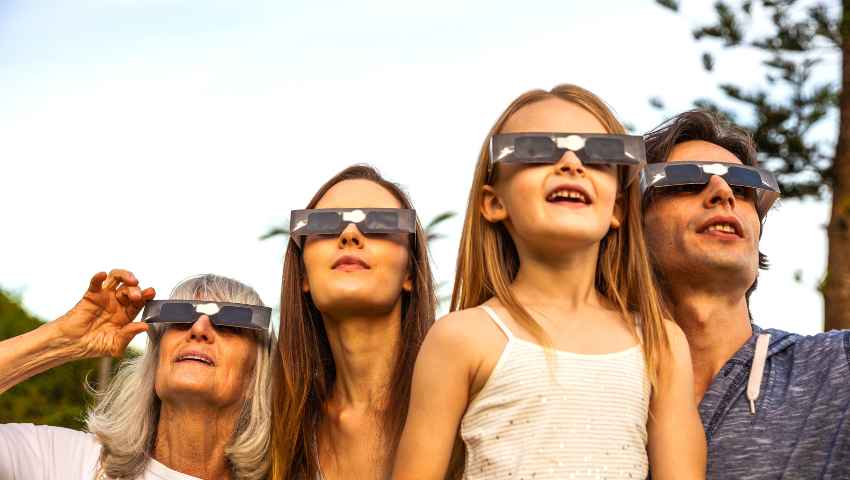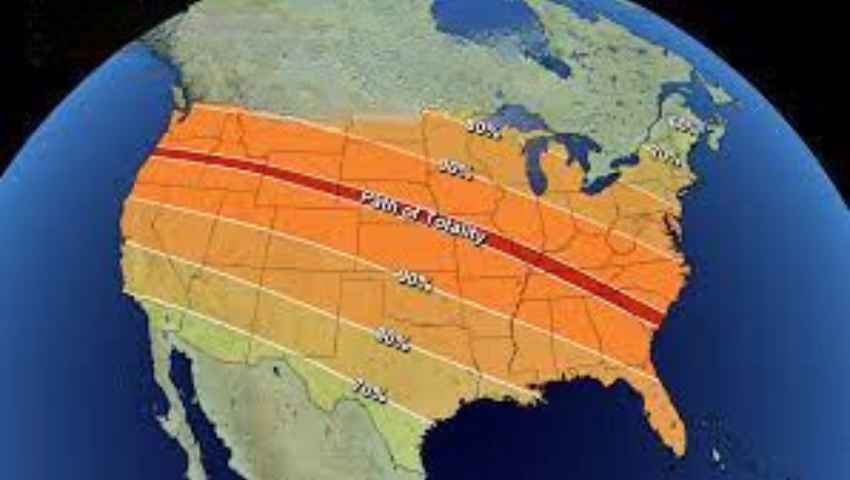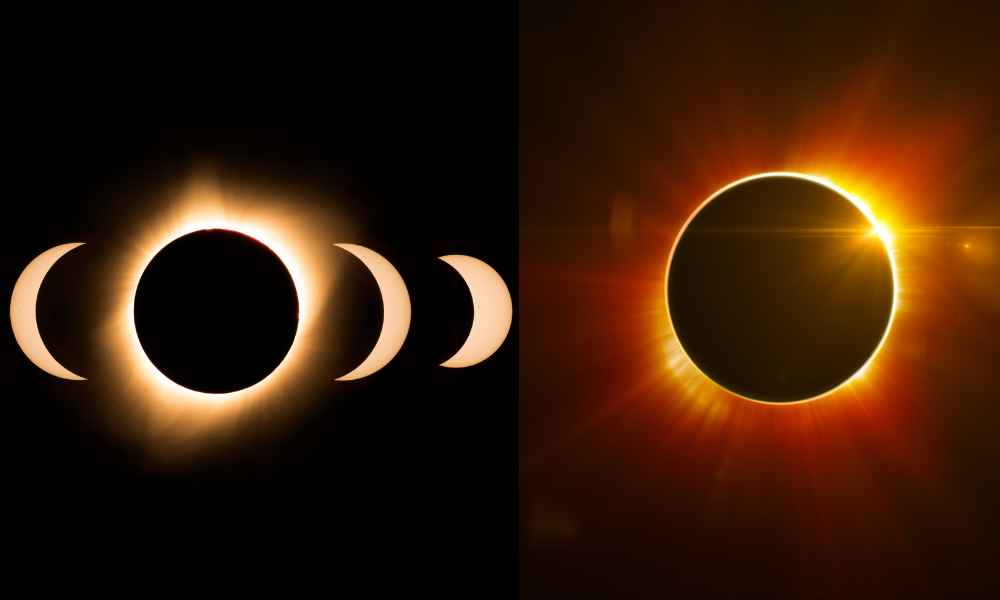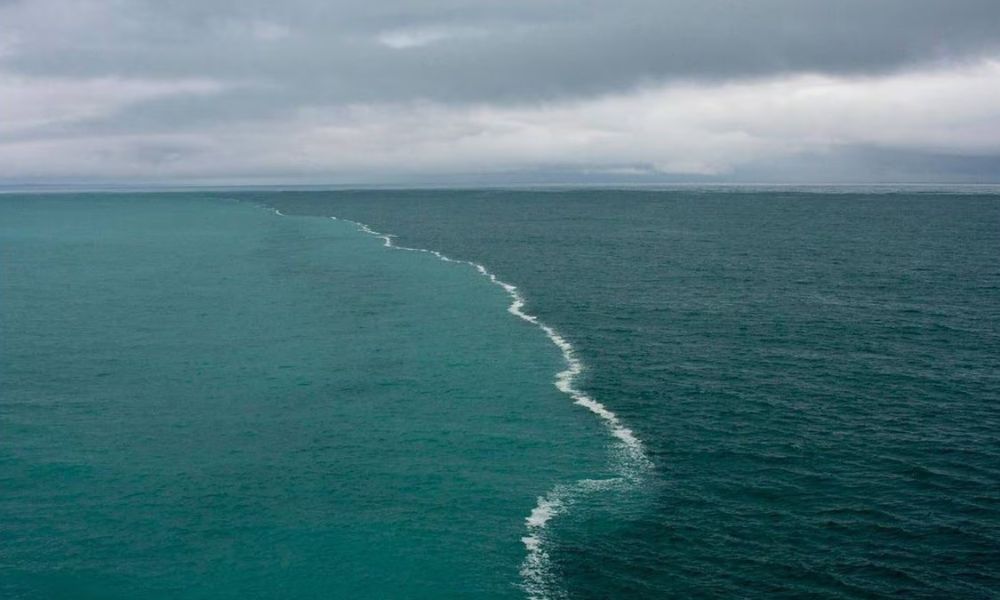On April 8, 2024, there will be a total solar eclipse through North America, Mexico, the United States, and Canada. This happens when the Moon, moving between the Sun and Earth, covers the Sun completely. During the eclipse, the sky will become dark, similar to dawn or dusk.
In 2017, around 215 million adults in the U.S. (88% of all adults) watched the solar eclipse, either in person or online. They saw the Moon move in front of the Sun, covering part or all of it. The eclipse in 2024 might be even more interesting because of differences in its path, timing, and scientific studies.
Understanding the Total Solar Eclipse
Partial or annular solar eclipses are not the same as total solar eclipses. In partial or annular eclipses, there is no time when the Moon fully covers the Sun. The path where the Moon’s shadow travels across the Earth’s surface during a solar eclipse is called the path of totality. To see the total solar eclipse on April 8, people need to be within the 115-mile-wide path.
Safety Guidelines for Viewing

When a total solar eclipse occurring, it’s not safe to look directly at the Sun without special eye protection for solar viewing. Using a camera, binoculars, or a telescope to view any part of the bright Sun without a special solar filter can instantly cause serious eye injury. Also, Supervise children when they use solar viewers.
During the partial phases of a solar eclipse (which occur before and after totality), always use safe solar viewing glasses or a handheld solar viewer. These glasses are not like regular sunglasses. They are much darker and should meet the ISO 12312-2 international standard. Always check your glasses before use, and discard them if they are damaged.
If you don’t have eclipse glasses or a handheld viewer, you can use an indirect viewing method, like a pinhole projector, to safely view the eclipse. Do not look through the pinhole directly. Solar filters for cameras, binoculars, or telescopes are different from eclipse glasses and handheld viewers.
When using cameras, binoculars, or telescopes with proper solar filters during the partial phases of the eclipse, you don’t need to wear eclipse glasses. The proper solar filters on these devices protect your eyes in the same way as eclipse glasses do. However, Please seek advice from an astronomer before using them.
During a total solar eclipse, you can view the Sun without eye protection only when the Moon fully covers it during totality. But as soon as even a small part of the Sun becomes visible again, use your eclipse glasses or viewer. Also, wear sunscreen, a hat, and protective clothes during the eclipse to shield your skin from the bright Sun.
Eclipse Travel and Viewing Locations

On April 8, 2024, a significant total solar eclipse will happen over parts of the United States. According to Michael Zeiler, an expert solar eclipse cartographer, 31 million people in the U.S. live within the path of totality.
It allows them to witness the celestial phenomenon without having to travel far. The path stretches from Texas to Maine, passing through several states and cities in between.
Kerrville, located in the Texas Hill Country, is an excellent spot to observe the 2024 eclipse. It’s near the Mexican border and will be one of the first U.S. cities to experience totality. The total eclipse will start at 1:32 p.m. and last for almost four and a half minutes there.
Austin and Dallas are also in the path of totality. But total solar eclipse durations will be shorter. It’s around two minutes for Austin and just under four minutes for Dallas. NASA is organizing an event at Louise Hays Park in Kerrville featuring live music, speakers, and activities for children.
The total solar eclipse path starts in Texas. It moves through Oklahoma, Arkansas, Missouri, Illinois, Kentucky, Indiana, Ohio, Pennsylvania, New York, Vermont, New Hampshire, and Maine in the U.S. Small sections of Tennessee. Michigan will also witness the total eclipse, as per NASA’s information.
Here are some American cities where the total solar eclipse on April 8 will be most visible. This information is from ABC News and may change depending on weather forecasts.
Texas
- Eagle Pass, Texas, 1:27 p.m. CDT: 4 minutes, 23 seconds
- Uvalde, Texas, 1:29 p.m. CDT: 4 minutes, 16 seconds
- Kerrville, Texas, 1:32 p.m. CDT: 4 minutes, 23 seconds
- Austin, Texas, 1:36 p.m. CDT: 1 minute, 53 seconds
- Killeen, Texas, 1:36 p.m. CDT: 4 minutes, 17 seconds
- Fort Worth, Texas, 1:40 p.m. CDT: 2 minutes, 34 seconds
- Dallas, Texas, 1:40 p.m. CDT: 3 minutes, 47 seconds
Arkansas
- Little Rock, Arkansas, 1:51 p.m. CDT: 2 minutes, 33 seconds
- Jonesboro, Arkansas, 1:55 p.m. CDT: 2 minutes, 24 seconds
- Poplar Bluff, Arkansas, 1:56 p.m. CDT: 4 minutes, 8 seconds
Missouri
- Cape Girardeau, Missouri, 1:58 p.m. CDT: 4 minutes, 6 seconds
Illinois
- Carbondale, Illinois, 1:59 p.m. CDT: 4 minutes, 8 seconds
- Mount Vernon, Illinois, 2:00 p.m. CDT: 3 minutes, 40 seconds
Indiana
- Evansville, Indiana, 2:02 p.m. CDT: 3 minutes, 2 seconds
- Terre Haute, Indiana, 3:04 p.m. EDT: 2 minutes, 57 seconds
- Indianapolis, Indiana, 3:06 p.m. EDT: 3 minutes, 46 seconds
Ohio
- Dayton, Ohio, 3:09 p.m. EDT: 2 minutes, 46 seconds
- Wapakoneta, Ohio, 3:09 p.m. EDT: 3 minutes, 55 seconds
- Toledo, Ohio, 3:12 p.m. EDT: 1 minute, 54 seconds
- Cleveland, Ohio, 3:13 p.m. EDT: 3 minutes, 50 seconds
Pennsylvania
- Erie, Pennsylvania, 3:16 p.m. EDT: 3 minutes, 43 seconds
New York
- Buffalo, New York, 3:18 p.m. EDT: 3 minutes, 45 seconds
- Rochester, New York, 3:20 p.m. EDT: 3 minutes, 40 seconds
- Syracuse, New York, 3:23 p.m. EDT: 1 minute, 26 seconds
Vermont
- Burlington, Vermont, 3:26 p.m. EDT: 3 minutes, 14 seconds
Maine
- Island Falls, Maine, 3:31 p.m. EDT: 3 minutes, 20 seconds
- Presque Island, Maine, 3:32 p.m. EDT: 2 minutes, 47 seconds
Eclipse Track and Future Events
The total eclipse will be visible in Mexico from 10:51 AM MDT to 12:32 PM CST, in the US from 1:27 PM CDT to 3:35 PM EDT, and in Canada from 3:12 PM EDT to 5:16 PM NDT. Also, London’s next solar eclipse will be a partial one on March 29, 2025.
Conclusion
The total solar eclipse on April 8, 2024, will traverse Mexico, the United States, and Canada. Safety is paramount; viewing the eclipse directly without protection can harm your eyes. Utilize eclipse glasses or indirect methods like a pinhole projector for safe viewing. Different cities will experience varying durations of totality, offering unique observation opportunities.
It’s a rare celestial event reminding us of the universe’s wonders.







